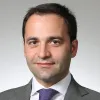Kalin Anev Janse in interview with Bloomberg TV
Transcript of interview with ESM Chief Financial Officer Kalin Anev Janse
Bloomberg TV
Live broadcast on 3 June 2020
Interviewers: Anna Edwards and Matt Miller
Bloomberg TV: Klaus Regling, the ESM president, has said that it's much cheaper for countries to borrow via the ESM than the open market. You yourself, in a blog post, I think, have said that the credit lines are open and attractive and yet nobody's asking for the money. Why do you think that is?
Kalin Anev Janse: Good morning and thank you for having me. We are faced by a tragic human crisis, with large financial and economic impact. And it will be the biggest crisis many of us will experience. So it's logical that countries are now assessing what to do and how to respond to it. I think what Klaus, our managing director, said, is that it is cheaper and more attractive for countries to finance themselves through the ESM.
But none of these countries have lost market access. So what have done is that we have created a package of €540 billion, from the EIB, European Commission, and the ESM; we represent €240 billion of that. And countries can borrow up to two percent of GDP for direct and indirect costs (related to healthcare). That package had to be ready on 1 June. So this is the first week that countries can start assessing which of the different tools and instruments they want to use. And we are there to help them if they need us.
So are you and other leaders of the ESM in talks with leaders of the countries that need money? I mean, if they could be saving, what, millions, hundreds of millions, even billions of euros by using the ESM instead of seeking alternative routes, do you try and convince them to do that?
We are there as an insurance mechanism for those countries. Those countries have market access, so they can finance themselves through the market, which is easy for them.
Isn't it more expensive for them to go to the market?
The ESM is cheaper than going to the market for roughly 11 countries. However, it is not our intention to push our instrument to them. They can assess the ESM credit line. They can use it if they need to. But already having the credit line available makes it easier for them to access markets. And it can also take away some of the pressure on their sovereign curves because this pandemic line is available. But what is important is that there is a backstop for them. There's a backstop for sovereigns, which is us, there is a backstop for SMEs, which is the EIB. And there is a backstop for unemployment, which is through the European Commission. And there are of course advantages of going to some of these European instruments for countries.
It's interesting that you think it has a use, even if it's not actually tapped. You've referenced that it has light conditionality and low fees attached to it. Could the conditionality be reduced further if that was found to be a stumbling block that some member states didn't like?
The only conditionality that is attached to our instrument is that it has to be used for direct and indirect costs (related to health care), and it is available to all countries. So all 19 countries of the eurozone can use it and they can tap into up to two percent of GDP.
They will need to show that the costs are useful medical and healthcare expenses, and they need to provide details on how much percent of GDP that is and how many billions they will spend on direct and indirect costs. But as of that moment, the money can be drawn and can be applied for up to 2022.
You write that the ESM has shown its ability to adapt to the crisis. What do you think of the ESM and the social bond principles that you write about in your blog?
What's interesting about the Pandemic Crisis Support is that it is very targeted to health care and medical expenses. And what we've seen over the last weeks is that there is a growth in issuance that's related to social bonds. We at the ESM have started exploring this and actually are putting a framework in place to issue social bonds in case the Pandemic Crisis Support is requested. So if there is a request and it is drawn, we will be financing this by social bonds.
What do you think the difference has been when we've seen the recovery fund announced by Angela Merkel and Emmanuel Macron, and pushed through by the European Commission? There are grants available there of course. Has that meant we've seen lower demand for ESM credit lines as a result of these alternative grants being possibly available? I know that's not agreed yet.
The proposal of Macron and Merkel is a very good one. It was followed by the European Commission proposal, which is also very good. But it will take time for those to be put in place. They will be in place by 2021 at the earliest. The advantage of the ESM Pandemic Crisis Support is that it is available as of today, so countries can apply for it as of today and can have significant cost savings if they do so. Again, they don't need to use it; no one has lost market access, but it is reassuring that this line is available. And as you correctly said, for some countries, it can have savings up to €6 billion over 10 years' time.
Author

Contacts


